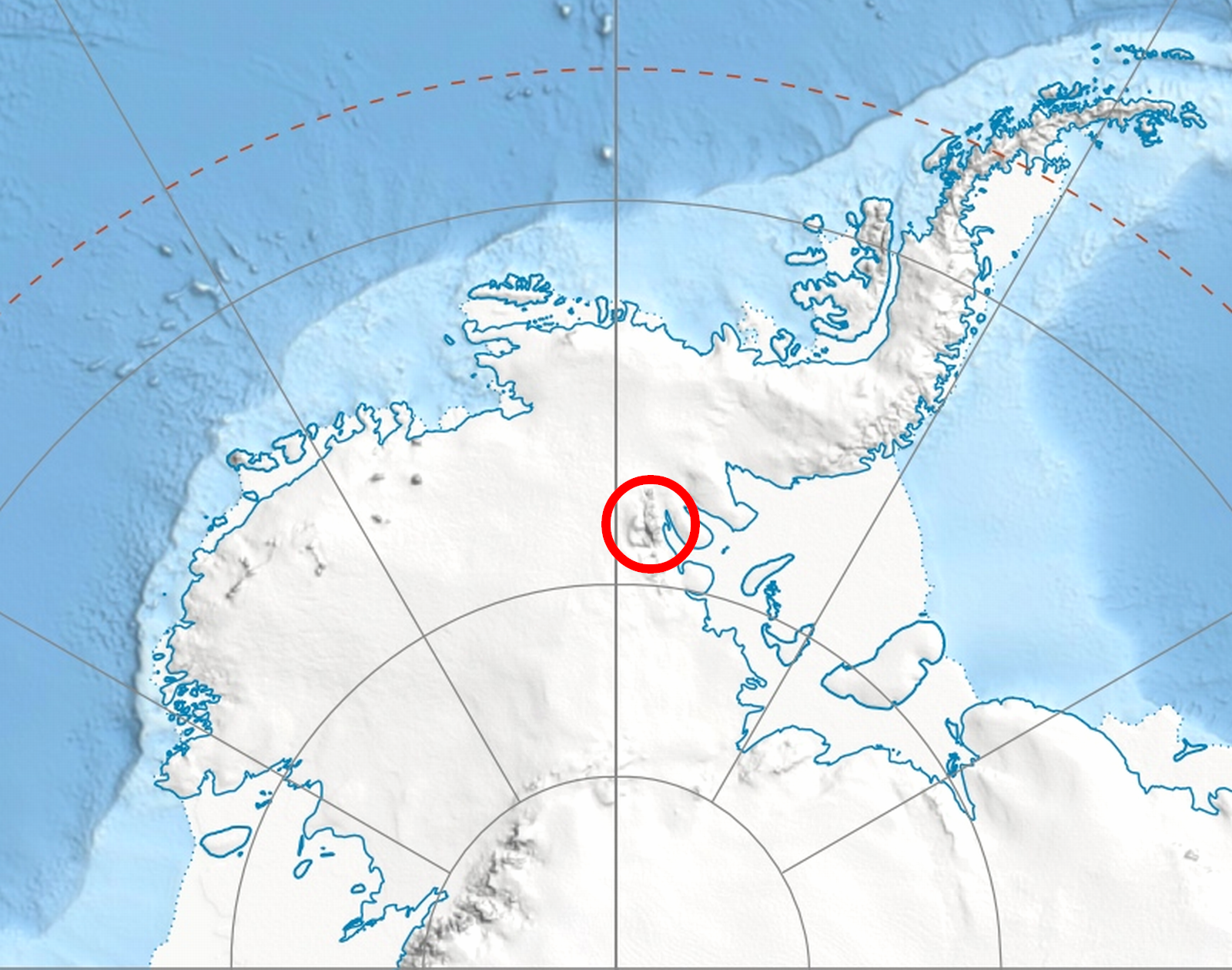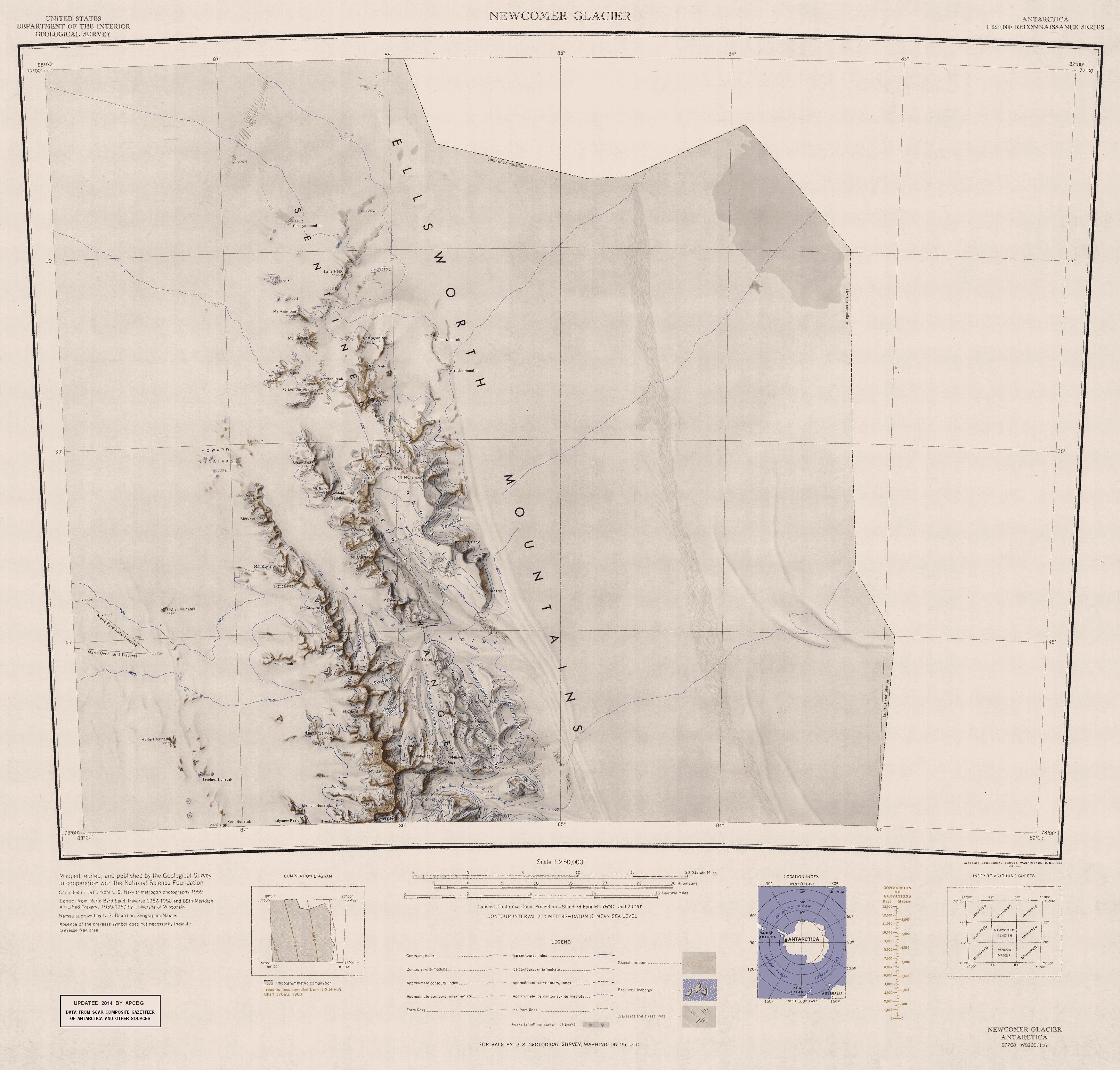|
Polarstar Peak
Polarstar Peak () is a peak rising above 2,400 m, standing 3 nautical miles (6 km) north of Mount Ulmer in Gromshin Heights on the east side of northern Sentinel Range in Ellsworth Mountains, Antarctica. It surmounts the head of Vicha Glacier to the southeast. The peak was discovered by Lincoln Ellsworth on his trans-Antarctic flight of November 23, 1935. It was named by the Advisory Committee on Antarctic Names (US-ACAN) for the airplane Polar Star in which Ellsworth made the historic flight. See also * Mountains in Antarctica This is a list of all the ultra prominent peaks (with topographic prominence greater than 1,500 metres) in Antarctica. Some islands in the South Atlantic have also been included and can be found at the end of the list. Antarctica South At ... References * Mountains of Ellsworth Land {{EllsworthLand-geo-stub ... [...More Info...] [...Related Items...] OR: [Wikipedia] [Google] [Baidu] |
Summit (topography)
A summit is a point on a surface that is higher in elevation than all points immediately adjacent to it. The topography, topographic terms acme, apex, peak (mountain peak), and zenith are synonymous. The term (mountain top) is generally used only for a mountain peak that is located at some distance from the nearest point of higher elevation. For example, a big, massive rock next to the main summit of a mountain is not considered a summit. Summits near a higher peak, with some Topographic prominence, prominence or Topographic isolation, isolation, but not reaching a certain cutoff value for the quantities, are often considered ''subsummits'' (or ''subpeaks'') of the higher peak, and are considered part of the same mountain. A pyramidal peak is an exaggerated form produced by ice erosion of a mountain top. For summits that are permanently covered in significant layers of ice, the height may be measured by the highest point of rock (rock height) or the highest point of permanent ... [...More Info...] [...Related Items...] OR: [Wikipedia] [Google] [Baidu] |
Mount Ulmer
Mount Ulmer () is a prominent peak situated 2 miles north of Mount Washburn in Gromshin Heights on the east side of northern Sentinel Range in Ellsworth Mountains, Antarctica. It surmounts the head of Vicha Glacier to the east and Newcomer Glacier to the west. The mountain was discovered by Lincoln Ellsworth in his trans-Antarctic flight on November 23, 1935, who called it "Mount Mary Louise Ulmer", after his wife. The peak was reidentified by comparing Ellsworth's photograph with those taken in 1959 by the U.S. Navy The United States Navy (USN) is the maritime service branch of the United States Department of Defense. It is the world's most powerful navy with the largest displacement, at 4.5 million tons in 2021. It has the world's largest aircraft .... The peak of the mountain rises to a total of 3,800 meters. Maps Newcomer Glacier. Scale 1:250 000 topographic map. Reston, Virginia: US Geological Survey, 1961. Antarctic Digital Database (ADD).Scale 1:2 ... [...More Info...] [...Related Items...] OR: [Wikipedia] [Google] [Baidu] |
Gromshin Heights
Gromshin Heights (, ‘Gromshinski Vazvisheniya’ \'grom-shin-ski v&-zvi-'she-ni-ya\) are the heights rising to 2731 mReference Elevation Model of Antarctica. Polar Geospatial Center. University of Minnesota, 2019 at on the east side of northern in , . T ... [...More Info...] [...Related Items...] OR: [Wikipedia] [Google] [Baidu] |
Sentinel Range
The Sentinel Range is a major mountain range situated northward of Minnesota Glacier and forming the northern half of the Ellsworth Mountains in Antarctica. The range trends NNW-SSE for about and is wide. Many peaks rise over and Vinson Massif (4892 m) in the southern part of the range is the highest elevation on the continent.Sentinel Range. SCAR Composite Antarctic Gazetteer. Sentinel Range comprises a main ridge (featuring Vinson Massif in its southern portion) and a number of distinct heights, ridges and mountains on its east side, including (south to north) Owen Ridge, Petvar Heights, [...More Info...] [...Related Items...] OR: [Wikipedia] [Google] [Baidu] |
Ellsworth Mountains
The Ellsworth Mountains are the highest mountain ranges in Antarctica, forming a long and wide chain of mountains in a north to south configuration on the western margin of the Ronne Ice Shelf in Marie Byrd Land. They are bisected by Minnesota Glacier to form the Sentinel Range to the north and the Heritage Range to the south. The former is by far the higher and more spectacular with Mount Vinson () constituting the highest point on the continent.Bockheim, J.G., Schaefer, C.E., 2015. ''Soils of Ellsworth Land, the Ellsworth Mountains''. In: Bockheim, J.G. (Ed.), ''The Soils of Antarctica. World Soils Book Series'', Springer, Switzerland, pp. 169–181. The mountains are located within the Chilean Antarctic territorial claim but outside of the Argentinian and British ones. Discovery The mountains were discovered on November 23, 1935, by the American explorer Lincoln Ellsworth in the course of a trans-Antarctic flight from Dundee Island to the Ross Ice Shelf. He gave the ... [...More Info...] [...Related Items...] OR: [Wikipedia] [Google] [Baidu] |
Antarctica
Antarctica () is Earth's southernmost and least-populated continent. Situated almost entirely south of the Antarctic Circle and surrounded by the Southern Ocean (also known as the Antarctic Ocean), it contains the geographic South Pole. Antarctica is the fifth-largest continent, being about 40% larger than Europe, and has an area of . Most of Antarctica is covered by the Antarctic ice sheet, with an average thickness of . Antarctica is, on average, the coldest, driest, and windiest of the continents, and it has the highest average elevation. It is mainly a polar desert, with annual Climate of Antarctica#Precipitation, precipitation of over along the coast and far less inland. About 70% of the world's freshwater reserves are frozen in Antarctica, which, if melted, would raise global sea levels by almost . Antarctica holds the record for the Lowest temperature recorded on Earth, lowest measured temperature on Earth, . The coastal regions can reach temperatures over in the ... [...More Info...] [...Related Items...] OR: [Wikipedia] [Google] [Baidu] |
Vicha Glacier
Vicha Glacier (, ) is the 27 km long and 6 km wide glacier in Gromshin Heights on the east side of northern Sentinel Range in Ellsworth Mountains, Antarctica. It is situated northeast of Newcomer Glacier and southwest of Yamen Glacier. The glacier drains southwards along the east slopes of Mount Ulmer and Mount Ojakangas, then turns southeast at Mount Washburn, flows east of Mount Cornwell and Mount Warren, and southwest of Branishte Peak, and together with Newcomer Glacier joins Rutford Ice Stream south of Foros Spur. |
Lincoln Ellsworth
Lincoln Ellsworth (May 12, 1880 – May 26, 1951) was an American polar explorer, engineer, surveyor, and author. He led the first Arctic and Antarctic air crossings. Early life Linn Ellsworth was born in Chicago, Illinois on May 12, 1880. His parents were Eva Frances (née Butler) and James Ellsworth, a wealthy coal mine owner and financier.http://pabook2.libraries.psu.edu/palitmap/bios/Ellsworth__Lincoln.html He was named Linn after his uncle William Linn, but changed his name to Lincoln when he was a child. His mother died in 1888. Ellsworth and his sister moved to Hudson, Ohio to live with his grandmother. He attended the Western Reserve Academy in Hudson and The Hill School in Pottstown, Pennsylvania. He took two years longer than usual to graduate, before entering the Sheffield Scientific School at Yale University. His academic performance was poor, and he subsequently enrolled at Columbia University School of Mines and studied civil engineering. He joined the frat ... [...More Info...] [...Related Items...] OR: [Wikipedia] [Google] [Baidu] |
Advisory Committee On Antarctic Names
The Advisory Committee on Antarctic Names (ACAN or US-ACAN) is an advisory committee of the United States Board on Geographic Names responsible for recommending commemorative names for features in Antarctica. History The committee was established in 1943 as the Special Committee on Antarctic Names (SCAN). It became the Advisory Committee on Antarctic Names in 1947. Fred G. Alberts was Secretary of the Committee from 1949 to 1980. By 1959, a structured nomenclature was reached, allowing for further exploration, structured mapping of the region and a unique naming system. A 1990 ACAN gazeeter of Antarctica listed 16,000 names. Description The United States does not recognise territorial boundaries within Antarctica, so ACAN assigns names to features anywhere within the continent, in consultation with other national nomenclature bodies where appropriate, as defined by the Antarctic Treaty System. The research and staff support for the ACAN is provided by the United States Geologi ... [...More Info...] [...Related Items...] OR: [Wikipedia] [Google] [Baidu] |
Polar Star
A pole star is a visible star that is approximately aligned with the axis of rotation of an astronomical body; that is, a star whose apparent position is close to one of the celestial poles. On Earth, a pole star would lie directly overhead when viewed from the North or the South Pole. Currently, Earth's pole stars are Polaris (Alpha Ursae Minoris), a bright magnitude 2 star aligned approximately with its northern axis that serves as a pre-eminent star in celestial navigation, and a much dimmer magnitude 5.5 star on its southern axis, Polaris Australis (Sigma Octantis). From around 1700 BC until just after 300 AD, Kochab (Beta Ursae Minoris) and Pherkad (Gamma Ursae Minoris) were twin northern pole stars, though neither was as close to the pole as Polaris is now. History In classical antiquity, Beta Ursae Minoris (Kochab) was closer to the celestial north pole than Alpha Ursae Minoris. While there was no naked-eye star close to the pole, the midpoint between Al ... [...More Info...] [...Related Items...] OR: [Wikipedia] [Google] [Baidu] |




